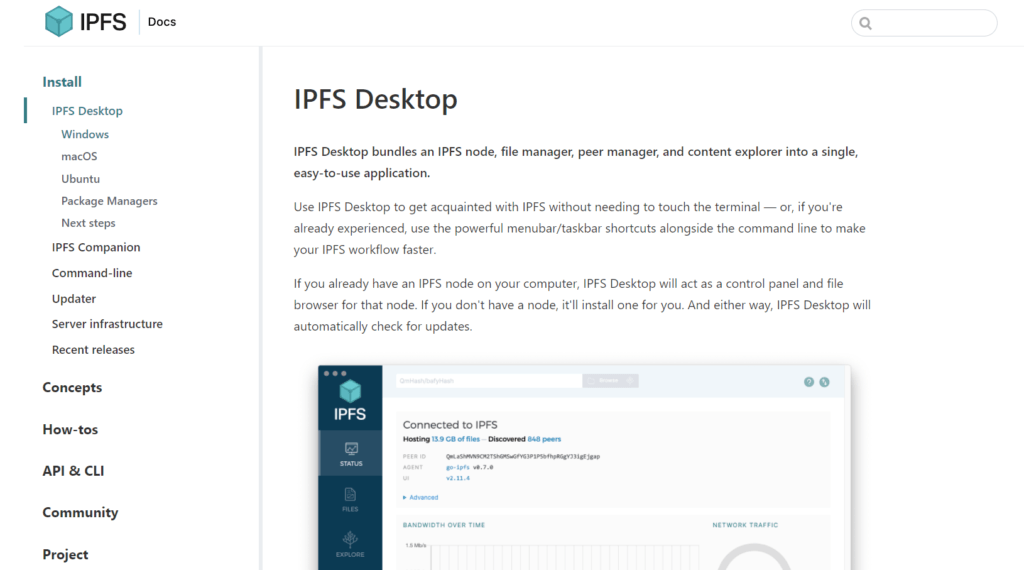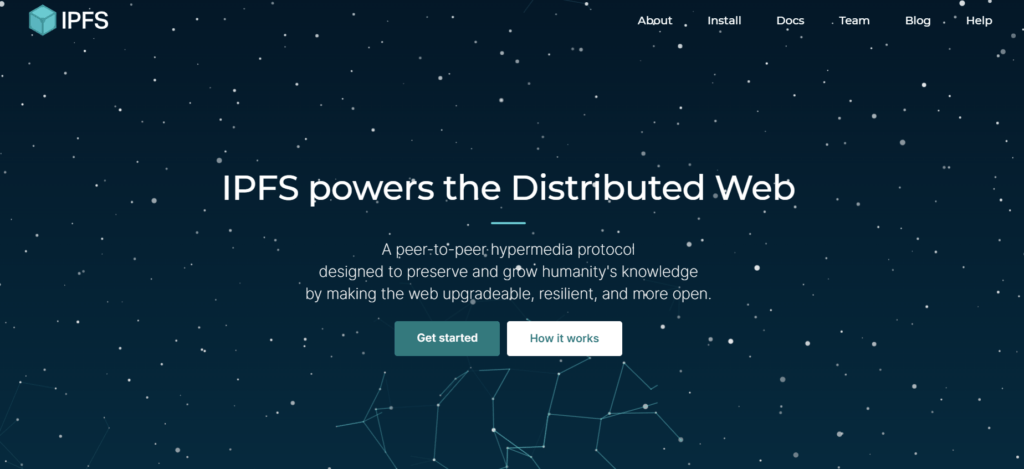Discover what is IPFS and why it’s so popular with many NFT projects, including Bored Ape Yacht Club.
Interplanetary File System or IPFS introduces faster content delivery, the highest degree of content integrity, and a censorship-proof content sharing environment. It’s also popular with NFT projects.
How will I restore my Coinbase NFTs collections if the current platform goes offline due to a fire in the data center or the website owner shuts it down? What will happen to all of my expensive NFTs if the decentralized finance (DeFi) app goes missing from Google Play or App Store?
My concerns grew since a fire at the OVHcloud’s data center in Strasbourg, France, on March 10, 2021, affecting 3.6 million websites, according to Reuters news. Though the incident affected only Europe but could happen to any of us.
Web 3.0 needs full-proof online content storage with the best data integrity protocols so that online content, including NFTS, never goes missing. In-depth research into the existing alternatives suggests that the IPFS protocol can make it happen.
Table of Contents
What Is IPFS (Interplanetary File System)?
After going through various file sharing protocols, I learned about the IPFS protocol, that various DeFi and cryptocurrency exchanges use. They use it to safe-keep their database while serving the users throughout the year without any interruption.
InterPlanetary File System (IPFS) is a distributed network file sharing protocol that uses millions of network nodes instead of a central server. For efficient content delivery, the protocol utilizes content-based search in place of location-based search.
NFT projects, website developers, video broadcasters, game streamers, and financial services providers can effortlessly use IPFS protocol since all the content can be converted into an IPFS Object. An IPFS Object is a 256 Kb data structure that stores the actual content up to 256 Kb and links to and from the IPFS Object.
The term “Interplanetary” means this technology will be of great use for cross-planet data communications. IPFS protocol will minimize the data transfer delay between the planet Earth and Mars.
How Does IPFS Work?
Every digital content has a cryptographic hash code. A cryptographic hash function (CHF) code represents digital data in an array of bits. There are several algorithms to produce hash codes for any data. IPFS protocol uses the SHA256 algorithm.
Hash code looks like a string of alphabets and numerals. For example, the hash code for the phrase “Hello World,” will be the following:
b94d27b9934d3e08a52e52d7da7dabfac484efe37a5380ee9088f7ace2efcde9
So, the IPFS content search protocol looks for the content hash code when you submit a query. Hash codes are unique, and one can only change the code when they modify the data. IPFS network keeps all the content of unique hash codes and deletes the ones consisting of the same hash code.
Thus, IPFS also works as a version control platform of your data and makes your website or database efficient by removing duplicate entries.
Since an IPFS Object can only store up to 256 Kb of data, any content above 256 Kb will contain multiple IPFS objects. However, these objects will contain links to each other so that the network can deliver all the blocks to the user’s device.
Your IPFS network interface will contain software that merges all the blocks of IPFS objects into the original content. This peer-to-peer file sharing protocol ensures high-quality data transfer and virtually corruption-free content if you download large videos or games.
There are three primary components of the IPFS networking system, and these are:
1. Content Addressing
A search protocol that looks for the content on the IPFS ecosystem by its hash code and not by the website URL.
2. Directed Acyclic Graphs (DAGs)
DAGs offer a topological placement of network nodes in the IPFS environment. The network connects the nodes through a directed acrylic graph that only shows data movement from one node to another and no loops.
Like GitHub, IPFS uses an optimized version of DAG known as Merkle DAG. Each node connected in the network has unique hash codes for its content. Thus, the network can easily identify the nodes that contain the queried file.
3. Distributed Hash Tables (DHTs)
IPFS depends on a distributed hash table or DHT to locate peers hosting content you want to fetch. DHT is simply a virtual database that connects all the peers and routes your content requests to the correct nodes by matching database keys with their values. It’s kind of like an evolution of how torrents work.
Who Uses the IPFS Protocol?
Blockchain networks, DeFi apps, creator economy tools, and cryptocurrency wallets use IPFS for file storage and sharing. Also, Web3 services focus on IPFS over the existing server-based file sharing and content storage system.
The most useful use case of the IPFS is storing NFT artwork or metadata. NFT creators, traders, and investors are moving their NFTs to the IPFS for long-term secure storage of files.
Popular NFT projects like the Bored Ape Yacht Club (BAYC), World Of Women, Filecoin, and VideoCoin stores their digital assets and metadata on the IPFS. NFT project developers save a lot of money by utilizing the IPFS. Storing NFT artwork on the blockchain is expensive.
If an NFT drop of 10,000 artwork wants to store its files on the blockchain, all the data needs verification, processing, and replication throughout the network. The project owners will end up paying millions of dollars just for artwork storage. The constraints of the blockchain explain why many entirely on-chain NFTs are SVG files or pixellated images.
Instead, NFT owners use off-chain storage, like AWS or IPFS, with smart contracts. IPFS is the preferred choice since stored data is safer here.
NFT developers create a link for their artwork or metadata stored on IPFS and put it into the smart contract on the blockchain where they mint the NFTs. Therefore, IPFS NFTs are more secure and cost-effective when compared with on-chain NFTS.
Apart from the NFT project use cases, a few other examples of real-life uses are:
- Pinata uses IPFS to keep a backup of digital assets from Sorare, Rarible, Autograph, Yugalabs, and so on.
- Filecoin is the distributed storage platform from Protocol Labs. Protocol Labs is also the developer of IPFS. You can earn Filecoin crypto if you join Filecoind as a node for data storage.
- Audius hosts its audio files on the IPFS. It is a popular destination for artists who want a censorship-proof platform to express their creative work.
- Microsoft ION is a distributed network-based identity verification system that also adopted IPFS and Bitcoin.
- Wikipedia has an IPFS mirror. You can try the IPFS version if the Wikipedia URL isn’t accessible from your country.
Can You Use IPFS for Personal Projects?
You can also become a part of the IPFS network or utilize the technology to address your NFT project requirements. Here is how:
1. IPFS Desktop

IPFS Desktop is a graphical user interface (GUI) version of an entire IPFS node. Thus, it shows you connection status and numbers of discovered peers.
You can also track network consumption through outgoing and incoming traffic. The software is available for Windows, macOS, and Linux computers.
Download: IPFS Desktop for Windows | macOS | Linux for free
2. Web Browser
If you are a content creator and want to minimize your cost for content distribution, you can try the Brave browser’s IPFS technology support. In the future, it will also support smartphone-based IPFS browsing, content pinning, Tor transport, and website publishing.
3. NFT Media Storage
You can store your NFT images or project files on Pinata without worrying about data loss due to website or data center crashes.
Pinata utilizes the IPFS protocol for content storage and hides your project files on the IPFS. Thus, until you release the NFT drops, curious investors can’t snoop into the drop details.
IPFS Decentralizes the Web: The Final Word
Currently, the IPFS project focuses on peer building since it will require millions of nodes for deployment. Popular technology companies like Gitcoin, Filecoin, Blockchain Development, Brave, Opera, and so on are already adopting the IPFS protocol.
A recent report revealed by IPFS.io says there are over 15 million NFTs on the IPFS gateway. The same report also confirms more than 230 thousand active IPFS nodes, over 3.7 million IPFS gateway users per week, and a whopping 805 million gateway requests catered by IPFS per week.
Therefore, IPFS is seeing widespread adoption and has the potential to go viral in the future. You should also prepare yourself for this next-generation technology. It’s highly likely that you will soon see the best NFT websites have moved their content to the IPFS.

